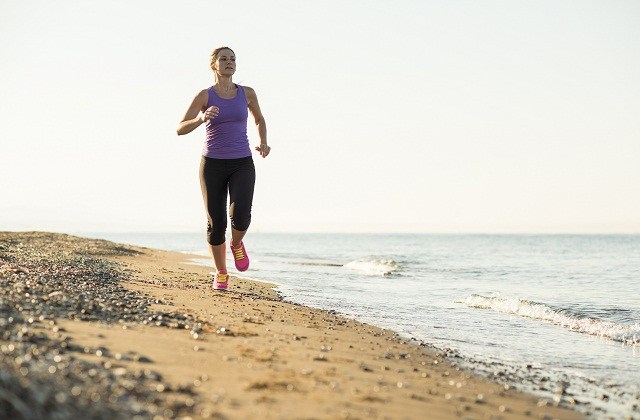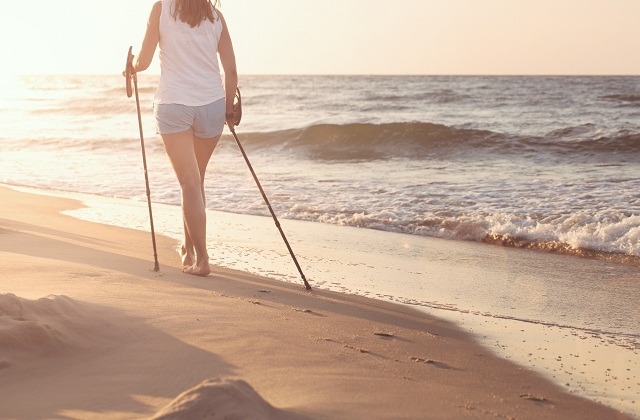
To walk or run?
We all know that physical exercise is great for a number of reasons but within the world of exercise, there is a difference of opinion about which is more beneficial, walking or running? Which is the better exercise and which provides the most benefit? Here at the Fuerte Blog, we’ve set out to find out.
Before going into the whys and wherefores, let’s first define the two exercises. When we talk about walking, we do not mean a leisurely stroll round the streets looking at shop windows. While that may be a very pleasant way to spend the day, it is not the exercise that will make your heart beat faster. In general terms, for physical exercise to be effective, it is recommended that the exercise should be continuous for at least 20 minutes.
In fact many experts think that golf, where players often walk between 6 and 8 kilometres in one session, is not an ideal cardio exercise due to the fact that the player has to keep stopping to contemplate his/her shot. Therefore when people say that a game of golf spoils a good walk, they are more right than they know. In this context, walking becomes a healthy cardiovascular activity when it refers to a brisk pace at about 4 to 5 km per hour, which will last a minimum of 50 to 60 minutes.
Running, Not Sprinting!
With respect to running or jogging, there are also one or two things to clarify. We are not talking about sprinting 100 metres in 9,75 seconds a la Usain Bolt nor are we talking about a fast 5000 or 10000 metre in the style of Mo Farah. It is running at a continuous, but comfortable speed, without putting extra strain on one’s leg muscles or heart. Also you don’t have to run as long as you would walk. Generally, about 30 minutes would be sufficient to equal an hour of walking.
Below, we have included a section of an article published by Andy Burford in Runner’s World Magazine, which you may find interesting. In this excerpt, he compares calories burnt in both exercises – a topic we discussed in an earlier post.
Table A: Calories Burned Per 1-Mile (1.6km) Walk vs. 1-Mile Run For A 156lb (70 kilos) Person
WALK* RUN**
CALS/MILE 88.9 112.5
CALS/MINUTE 4.78 11.25
AFTER-BURN/MILE 21.7 46.1
NEW TOTAL/MILE 110.6 158.6
CALS/MINUTE 5.95 15.86
A walk of a mile in 18.36 min. = Run a mile in 10.00 mins
Clearly, running burns more than twice as many calories per minute (11.25) as walking (4.78) and this difference increases when you consider the after-burn. For those who find this term foreign, it means the calories you burn in active rest after exercise.
However, you have to be careful about the way you apply the after-burn. You only get one after-burn per workout, not one per mile. So if you run 5 miles, your after-burn might still be just 46.1 calories (or minimally higher). You don’t get to multiply 5 * 158.6 calories/mile, which would yield 793 calories burned. Instead, you should multiply 5 *112.5, and then add 46.1. That yields 608.6.
It’s probably best just to multiply your Total Miles * 112.5, and consider the after-burn a nice little bonus. To increase your bonus, run faster during your workout. One recent study showed that a medium-difficult workout could produce 190 after-burn calories in the following 14 hours.
The 15 Truths about running and walking
Truths
- Both are excellent forms of doing physical exercise. They burn excess calories thus helping to control or reduce body weight.
- They help people to feel better both physically and psychologically.
- Both help strengthen bones
- They will help you build up your stamina
- Both will help with the body’s metabolism.
- They will probably help you with your sleep should you suffer insomnia or other sleeping conditions.
- Both help in the prevention of illnesses such as cancer, heart stroke, diabetes, hypertension, osteoporosis among others, as it boosts the immune system.
- They help minimize the risk of heart attacks as they strengthen the heart and also reduce blood pressure.
- Both help with illnesses such as fibromyalgia and arthritis.
- Both help with maintaining a good memory and help against the onset of illnesses such as dementia.
- There is evidence that jogging or walking on a regular basis increases self-esteem and confidence.
- They help you focus and train the mind.
- Both help you think and clarify problems. If you have a particular problem or dilemma, it helps to think about the options open to you whilst you are in the process of jogging or walking.
- They help you obtain a more positive attitude towards life and your daily routine because of the endorphins released during sport.
- Both improve your sexual performance.
- Both are exercises in the fresh air, which is beneficial plus there is no extra costs for expensive equipment or gym fees.
The four myths about running and walking
- Walking or jogging downhill burns fewer calories. This is not strictly true. You use different muscles going uphill or downhill so the difference in calorie burning is negligible.
- Walking or running will only tone the lower body. That is a myth. The largest muscle groups, which are in the lower body, are the ones engaged during walking, that much is a fact. But walking is an aerobic activity and that burns fat all over the body plus strengthens the heart.
- Jogging burns more calories tan walking. What makes this a myth or a fact depends on how fast a person is jogging or walking. Fast-paced walking (power walking) burns more calories than slow jogging. Running like your hair is on fire certainly burns more calories, but the leisurely jog around the subdivision will not burn the same amount of calories as a power walk around the same perimeter will burn.
- No pain, no gain. Muscle soreness, minor aches and breathing harder are a normal part of becoming more active. However, sharp pain is not OK. Start slowly and progress gradually to avoid injury. By avoiding pain, you’ll make better progress.
In conclusions, it doesn’t really matter what you decide to do. What is important is that you practice physical exercise that you enjoy and do regularly.

















